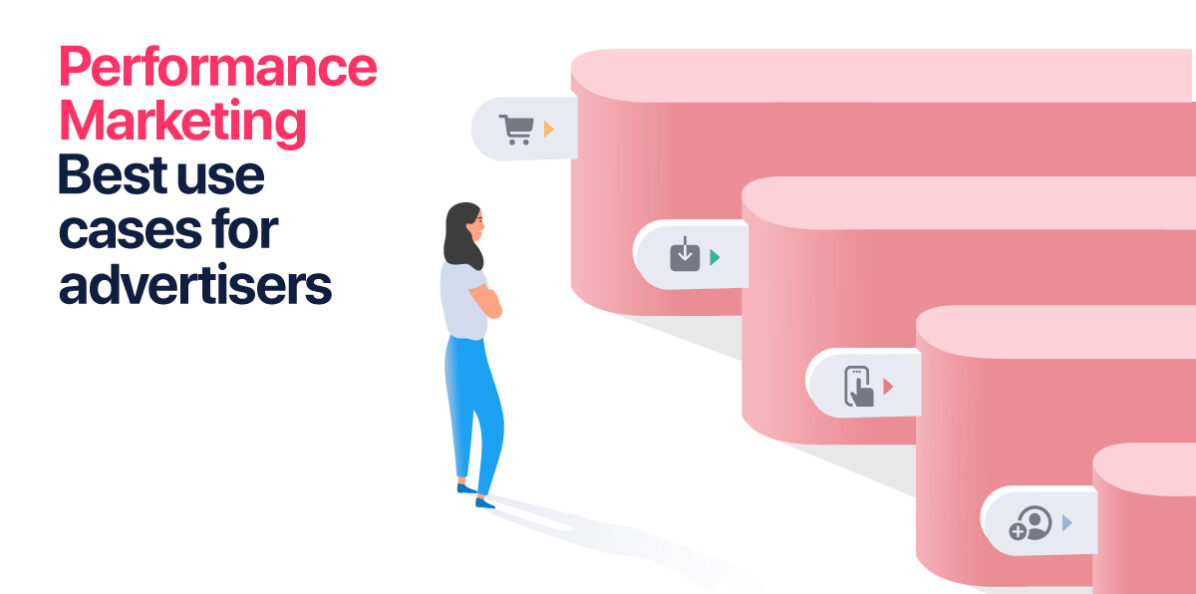How to Use Performance Marketing to Drive Real Business Outcomes

You can’t control everything going on in the world. You can only control how you react to it.
Individuals and businesses everywhere are learning to cope with the “new reality” that we’re facing. For marketers, this means taking a magnifying glass to all of your budgets and strategies to focus on efforts that are directly driving bottom-line impact.
At AdParlor, we understand the difficult decisions marketers are faced with to be successful in an ever-changing landscape. That’s why we launched a new Performance Marketing initiative – to help marketers through unprecedented times. Unlike a traditional agency structure, advertisers will only pay directly for business outcomes. We’ll cover the media spend and take the risk, so you only pay for the results that directly impact your bottom line.
The Benefits of Performance Marketing
In the last few decades, advertising has stayed remarkably consistent as a percentage of overall economic output. However, it doesn’t have to be that way. Enter Performance Marketing.
Under AdParlor’s new Performance Marketing initiative, advertisers will only pay when they receive directly attributable business outcomes. That includes (but isn’t limited to) purchase instances, new customers acquired, leads generated, app installs or in-app actions. Our team of experts will manage campaigns on your behalf across social and digital platforms. We’ll also build social-first creatives necessary to drive performance at scale.

Think about it. Gaining exposure and an understanding into the lifetime value of a newly acquired customer, lead generated, or even the total cost of a purchase to your business, can be profitable on every business result you drive. Your marketing campaigns can be completely de-risked in such an uncertain time period.
Real Businesses Driving Real Outcomes
Best use cases for advertisers
Now, let’s go a little deeper into some examples of how advertisers can make Performance Marketing work for them.
Let’s say you’re a marketer for at-home fitness company, Peloton. Your primary objective is to drive new customer purchases for your exercise bikes. You know the revenue you’ll generate from each purchase (currently starting at $2,245). Hopefully you have an understanding of your per-unit costs that you can build in to generate your profit per unit. Let’s assume it’s $1,000 profit per unit.
If you have a Performance Marketing partner who can help you acquire new customer purchases for you at under $1,000 per customer through successful digital marketing efforts, then you know every transaction is profitable per unit. You can invest in marketing to drive new customers at scale with the peace of mind that your investment is profitable.

For another example, let’s say you’re marketing for streaming app, Spotify. The focus of your marketing campaigns is to drive new users. You know your monthly revenue per customer (it’s $9.99/month). You also probably have a pretty good understanding of your customer lifetime value based on your subscriber churn rate. Let’s say that Spotify’s average customer LTV is $100. After adding costs of revenue (royalties they must pay out to artists/labels) and additional operating costs, let’s assume you have a $30 average profit per customer. Provided Spotify can acquire new users for under $30, they’re able to use performance marketing as a profitable engine for growth.

In both cases, these advertisers can almost completely de-risk their marketing investment while still driving business growth.
Is Performance Marketing for everyone?
Now, we don’t want to digress and say that our new Performance Marketing initiative isn’t designed for every marketer. But in some cases, not every marketer can leverage performance marketing to its fullest potential.

For example, if most of your business results are difficult to measure online, it won’t be an optimal strategy to only focus on those that can be effectively measured and optimized towards. Performance Marketing is also ideal for advertisers who are laser-focused on a single objective (say customer acquisition or new product purchases). However, If you’re a heavily brand-focused or full funnel advertiser, this model may not be the most optimal solution for you.
For a list of ideal verticals and objectives, check out our latest guide to Performance Marketing.
Next steps
Looking to de-risk your marketing spend in an uncertain time? Want to continue investing in advertising but focus on what drives tangible business results? Want to know if Performance Marketing is the right solution for your business?
Let’s chat. We’re here to help.